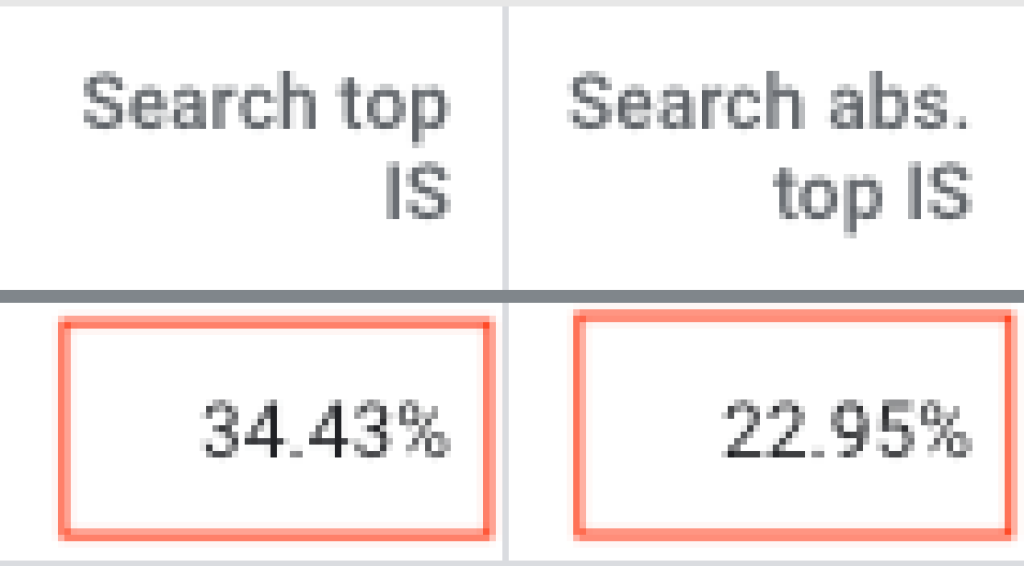Google To Remove Average Position

Back in February, Google announced that they would be removing the average position metric from the Google Ads platform on the 30th of September 2019.
What Is Average Position?
The average position metric describes how your ad is ranking against other ads. This then determines what position your ads will appear in within the results page. In an ideal world, you would want your ads to appear in the highest position of '1'.
The highest position you can be in is '1' but there is actually no bottom position. You will find that an average position between 1-8 will usually be on the first page of the search results. If you find yourself between 9-16, it is likely you are not on the first page and are in-fact on the 2nd page. This is where you would then increase your bids to improve your positioning.
It is also possible to have an average position that is not an equal number, such as '1.6'. This would imply that your ad often appears in either position 1 or 2. But realistically this isn't actually that accurate because its 1 or 2. This is the primary reason why Google have decided to remove the average position metric and replace it with more accurate ones.
Why Are Google Removing Average Position?
As you may know, Google are one of the largest tech companies in the world and are extremely data driven. Their search engine is used by billions of people every day and you may have even reached this article by using Google.
Over the years, Google have discovered that the average position metric isn't actually that accurate at all. This is because it gives you a rough idea of your position but not actually where it is really appearing. Now as an advertiser, you would want to see the most accurate data possible to make important decisions within your Google Ads campaigns.
As the number 1 search engine in the world, Google want to provide its advertisers with the best possible tools and this is why they are rolling out the new metrics as a replacement.
So, What Are The New Metrics?
Let's break them down one by one.
Search Top Impression Rate “Impr. (Top) %”
Search top impression rate is the percentage of your ad impressions that are shown anywhere above the organic search results.
So essentially the calculation is- Impressions on top/impressions.
Quick Tip- Impressions tell you how many times your ads have been seen on the Google Ads networks.
Search Absolute Top Impression Rate “Impr. (Abs.Top) %”
Search absolute top impression rate is the percentage of your ad impressions that are shown as the very first ad above the organic search results.
The calculation would be- Impressions on absolute top/impressions.
Now the key difference between these two metrics is 'Absolute Top'. You can see a visual representation of this below.
So now you can see the actual percentage of times your ads were shown in either 'absolute top' or within 'top'.
However, you would still need a metric that enables you to make bid adjustments so that you can adjust your position. Thats why Google have also introduced the additional metrics.
Search Top Impression Share "Search Top IS"
Search top impression share is the impressions you received in the top location compared to the estimated number of impressions you were eligible to receive in the top location.
This calculated as followed- Impressions on top/eligible impressions on top.
Search Absolute top Impression Share "Search abs. top IS"
Search absolute top impression share is the impressions you have received in the absolute top location compared to the number of impressions you were eligible to receive in the absolute top location.
This is calculated as follow- Impressions on absolute top/eligible impressions on top.
The "Search Top IS" & "Search abs. top IS" metrics are the figures you will want to focus on when making bid adjustments to improve the locations of your ads. Here is an example.
In the above image you can see that this particular ad was only shown 34.43% of the time in the top position but was eligible to be shown more often at the top. The scenario is the same for absolute top, the ad was shown only 22.95% of the time when it could have been shown more often in prime position.
Therefore, based on this data you could essentially bid higher if you wanted to appear more often at the top or bid lower if you actually wanted to appear less in those positions.
The average position metric may be missed in the short term as it is quite simple to analyse and advertisers have used to it for many years. However, you can understand why Google have made this change and this will be extremely beneficial for advertisers in the future. Advertisers will now get a deeper understanding of where their ads are actually appearing and can make better informed decisions.
Now you know the changes coming to Google Ads, why not read up on our article about Paid Social Vs Paid Search?


